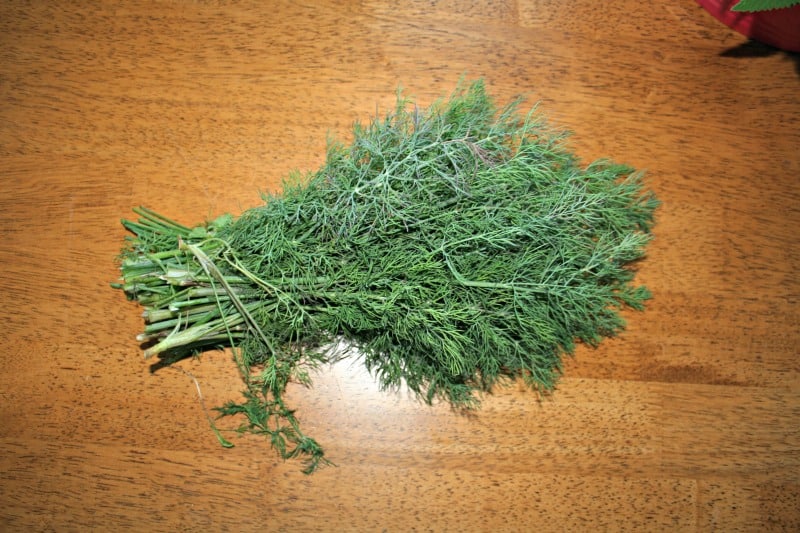Growing Dill Herb
If you’re interested in growing dill herb, good news — it is especially easy and prolific. I’ve sown it once or twice in my raised bed garden and it returns annually thanks to the abundant seeds it produces. I haven’t planted dill in years – it comes up from seeds, descendants of the original plants.
How to Grow Dill
Purchase seeds in the spring; use fresh seeds for the best results. Dill needs full sun, six to eight hours a day, and slightly acidic, well-drained soil. Sounds familiar? That’s because it’s pretty much the same requirements as carrots, which was yesterday’s “C” featured edible on the blogging A to Z challenge. That’s why my dill plants flourish next to the carrots – they both love the same thing!
If you choose to plant dill near carrots, a word of warning. When the seeds first emerge, they look almost identical to carrots. Wait a while before harvesting them until you’re sure you’re growing dill herb and not carrot tops and adding them to your sour cream and cucumbers. Dill grows to be several feet tall and will rapidly distinguish itself from carrots by its height. Waiting a bit ensures you’re harvesting dill for culinary purposes and not trying to use carrot tops.
Insects and Pests
In the picture above, you’ll see a caterpillar on my dill plant. Swallowtail butterflies and some other butterfly species love to lay their eggs on dill and the young caterpillars rapidly eat their way through a dill patch. I don’t mind, as I love butterflies. Plant extra and pick the leaves before the insects get to them. If they truly bother you, gently move the butterfly caterpillars to another plant such as parsley which they also love.
Tips to Grow Great Dill
Don’t transplant dill. Direct sowing seeds in early spring is the best way for growing dill herb. It hates to be transplanted and is unlikely to thrive once you move it.
Dill does not need fertilizer; any rich, well-drained soil produces excellent dill. Pick and use the leaves as needed or wait until the pretty flowers set seed. Dry the seeds in the sunshine and shake them into a paper towel to use them in recipes.






I love dill but it does not like my garden. I think it is just too wet.
I love fresh dill. I’ll be planting mine soon since my cukes are just poking through the mulch. 🙂
Snap! I love dill and grow it, and it seems we both blogged about it today:-)
Love dill. Mostly grow it for the caterpillars but last year I did try some dill pickles so the caterpillars are going to have to share!